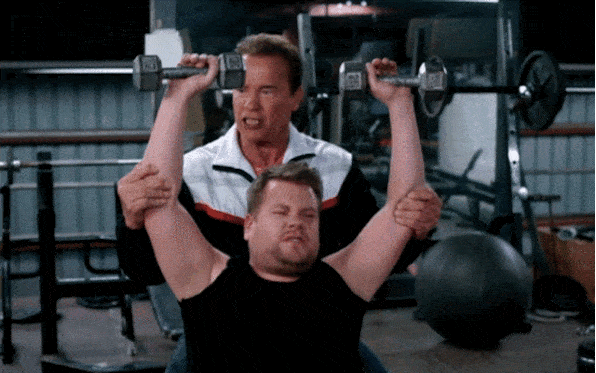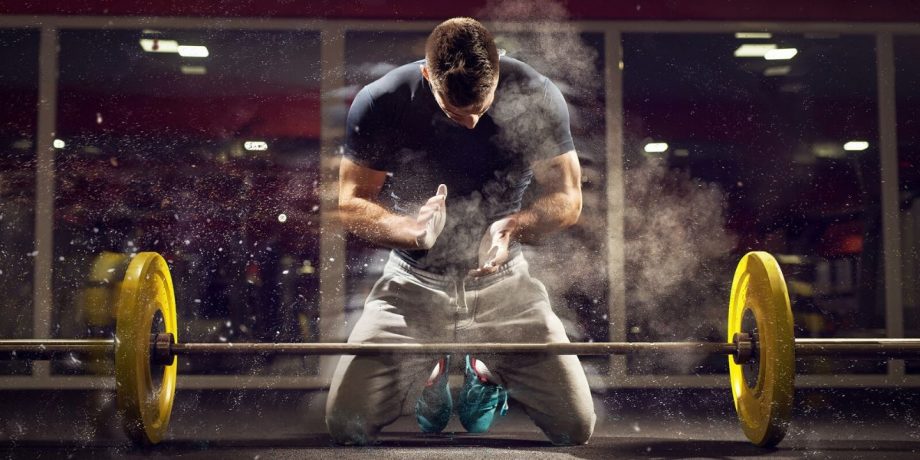5 Common Weightlifting Mistakes to Avoid

If you want bigger biceps or washboard abs, then weightlifting can be a good way to go. While weightlifting is an effective way to build both size and strength, there are other benefits as well.
In a 2014 study , Harvard researchers determined that strength training is more effective in preventing increases in abdominal fat than cardiovascular exercise. When you incorporate weightlifting into your exercise routine, you burn calories and increase lean muscle mass. In other words, it can help you build muscle and lose fat as long as you do it correctly.

Though weightlifting could be the key to helping you achieve your fitness goals, it’s not something you should rush into. Proper form when lifting weights is critical if you want to stay safe and see results.
Read on to learn five of the most common weightlifting mistakes beginners make and how you can avoid them.
Warming up your muscles before a workout improves your performance and reduces the risk of injury. When it comes to weightlifting, dynamic stretches can be the way to go. Whereas static stretches isolate a muscle for an extended period of time, dynamic stretches involve movement.
In a 2018 study published in Sports Medicine , dynamic stretches increase range of motion and enhance muscle force and power. Examples of dynamic stretches include:
If you prefer to work out in the morning when your muscles are cold, it may help to spend 5 to 10 minutes walking or jogging slowly before you stretch.

When you first start weightlifting, it takes time to learn proper form. It may feel silly to use weights that don’t challenge you, but good form is essential for a safe and effective workout. Trying to progress too quickly can increase your risk for an injury which will only put you further behind in reaching your goals.
Take the time to watch videos or schedule a few sessions with a licensed personal trainer to learn proper form for common lifts like squats, deadlift, and bench press. Practice your form with little to no weight until you have it down, then slowly add weight to build strength. The key is to train your muscles and use their full range of motion in each exercise rather than “cheating” by using your momentum.

Building your core is about more than just achieving the coveted six-pack – it’s also the key to increasing safety and performance throughout your entire weightlifting routine. Having a strong core helps stabilize your lower back, enhances flexibility, and improves balance and coordination. It also has real-world benefits like improving posture.
Many beginner weightlifters make the mistake of failing to engage their core during every exercise. If your core is weak, it may put extra pressure on your lower back during lower body exercises like lunges and squats. Include core exercises in your workout routine and keep your core tight during other exercises to give your body a solid and stable foundation.
A common weightlifting misconception is that lifting lighter weights for higher repetitions tones the muscles while heavier weights for lower reps build strength. The truth is muscles don’t change in tone; they only change in size. To achieve a “toned” look you’ll need to shed body fat while gaining muscle mass to increase muscular definition.
Incorporating cardiovascular exercise into your workout routine can help you burn extra calories, but a healthy diet may be even more important. Consult with a licensed dietitian to determine the optimal calorie deficit to facilitate healthy fat loss.

To keep building strength you need to challenge your muscles during each workout. It’s important not to go too heavy, however, because it decreases the efficacy of the workout and increases your risk for injury. Find a weight that feels comfortable and allows you to achieve a full range of motion throughout the exercise without compromising your form. If you’re struggling to grow a particular muscle group, explore the mind-muscle connection to jump-start your gains.
Whether your goal is to lose fat or build muscle, weightlifting will help you get there. Using proper form, warming up before your workouts, and giving your body time to recover in between are the keys to staying safe and achieving your desired results. Fuel muscle and joint recovery with a post-workout collagen protein shake and listen to your body – slow and steady progress is better than risking injury. If you stay consistent and avoid these common pitfalls, you’ll see the results you want in time.

In a 2014 study , Harvard researchers determined that strength training is more effective in preventing increases in abdominal fat than cardiovascular exercise. When you incorporate weightlifting into your exercise routine, you burn calories and increase lean muscle mass. In other words, it can help you build muscle and lose fat as long as you do it correctly.

Though weightlifting could be the key to helping you achieve your fitness goals, it’s not something you should rush into. Proper form when lifting weights is critical if you want to stay safe and see results.
5 of the Most Common Beginner Weightlifting Mistakes
Read on to learn five of the most common weightlifting mistakes beginners make and how you can avoid them.
1. Skipping the Warm-Up
Warming up your muscles before a workout improves your performance and reduces the risk of injury. When it comes to weightlifting, dynamic stretches can be the way to go. Whereas static stretches isolate a muscle for an extended period of time, dynamic stretches involve movement.
In a 2018 study published in Sports Medicine , dynamic stretches increase range of motion and enhance muscle force and power. Examples of dynamic stretches include:
- Lunge with a twist
- High kicks
- Hip rotations
- Leg swings
- Arm/shoulder rotations
If you prefer to work out in the morning when your muscles are cold, it may help to spend 5 to 10 minutes walking or jogging slowly before you stretch.

2. Going Too Fast
When you first start weightlifting, it takes time to learn proper form. It may feel silly to use weights that don’t challenge you, but good form is essential for a safe and effective workout. Trying to progress too quickly can increase your risk for an injury which will only put you further behind in reaching your goals.
Take the time to watch videos or schedule a few sessions with a licensed personal trainer to learn proper form for common lifts like squats, deadlift, and bench press. Practice your form with little to no weight until you have it down, then slowly add weight to build strength. The key is to train your muscles and use their full range of motion in each exercise rather than “cheating” by using your momentum.

3. Not Engaging the Core
Building your core is about more than just achieving the coveted six-pack – it’s also the key to increasing safety and performance throughout your entire weightlifting routine. Having a strong core helps stabilize your lower back, enhances flexibility, and improves balance and coordination. It also has real-world benefits like improving posture.
Many beginner weightlifters make the mistake of failing to engage their core during every exercise. If your core is weak, it may put extra pressure on your lower back during lower body exercises like lunges and squats. Include core exercises in your workout routine and keep your core tight during other exercises to give your body a solid and stable foundation.
4. Using Higher Repetitions
A common weightlifting misconception is that lifting lighter weights for higher repetitions tones the muscles while heavier weights for lower reps build strength. The truth is muscles don’t change in tone; they only change in size. To achieve a “toned” look you’ll need to shed body fat while gaining muscle mass to increase muscular definition.
Incorporating cardiovascular exercise into your workout routine can help you burn extra calories, but a healthy diet may be even more important. Consult with a licensed dietitian to determine the optimal calorie deficit to facilitate healthy fat loss.

5. Going Too Heavy
To keep building strength you need to challenge your muscles during each workout. It’s important not to go too heavy, however, because it decreases the efficacy of the workout and increases your risk for injury. Find a weight that feels comfortable and allows you to achieve a full range of motion throughout the exercise without compromising your form. If you’re struggling to grow a particular muscle group, explore the mind-muscle connection to jump-start your gains.
Whether your goal is to lose fat or build muscle, weightlifting will help you get there. Using proper form, warming up before your workouts, and giving your body time to recover in between are the keys to staying safe and achieving your desired results. Fuel muscle and joint recovery with a post-workout collagen protein shake and listen to your body – slow and steady progress is better than risking injury. If you stay consistent and avoid these common pitfalls, you’ll see the results you want in time.





































































































